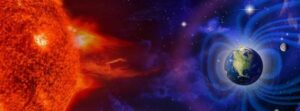How solar storms affect railway signals
A project investigating the effect of solar storms on railway signals, presented this week at the National Astronomy Meeting (NAM 2022) by Cameron Patterson, a PhD student at Lancaster University, shows how fluctuations in space weather are disrupting train signals and causing significant delays.

